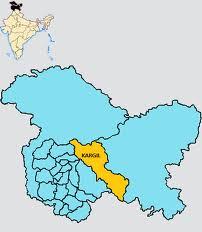A 23-year-old man (name withheld) from south Kashmir’s Pulwama district has become the first person diagnosed with chronic fascioliasis (liver fluke), a disease common among sheep and cattle.
Noted Gastroenterologist and senior faculty member at Department of Gastroenterology, SKIMS, Prof G N Yattoo and his team diagnosed the disease after thorough investigations.
The doctors termed the patient as the “first case of human fascioliasis (liver fluke), in Jammu and Kashmir” and in north India.
The patient was diagnosed with chronic fascioliasis at Department of Gastroenterology, Microbiology on April 23, 2016.
“This is the first case of human fascioliasis diagnosed in the State. We diagnosed the patient after performing ERCP on this patient for a suspected biliary disease,” said Prof G N Yattoo.
He said the case had been one of the most “exciting clinical challenges” in his career so far and he had finally diagnosed him of the “rare disease”.
On enquiring about the clinical details, Prof Yattoo said the patient was being treated for nearly three months at local medical centres, SMHS hospital and by some private practitioners for fever but without any substantial relief.
Three months later, he felt severe abdominal pain, necessitating injection of intravenous painkillers.
The private physicians advised him to undergo USG and CT on abdomen.
The reported pointed at suspicious metastatic liver disease (spread of cancer to liver from some other organ) and the patient was accordingly referred to SKIMS for further evaluation.
Prof Yatoo said the baseline investigations of the patient revealed high blood Eosinophilic count, and high Alkaline Phosphatase (a liver function test).
After finding the patient in good health having good appetite and no other warning signs, cancer was not considered even a distant possibility.
However, the possible screening was done and cancer ruled out.
Many other diseases (chronic infections, immunological disorders, sarcoidosis, hyper eosinophilic syndrome, eosinophilic bile duct disease) were considered as clinical possibilities.
“Frankly speaking, I never thought of chronic fascioliasis as it has never been reported from this part of the world and have never seen such a case before,” he said.
In an effort to prove or disprove the various possibilities, the patient needed two invasive procedures (Liver Biopsy and ERCP).
“The most difficult part and clinical challenges for performing these tests were financial constraints and non- availability of an attendant for giving the consent for the procedures. However, with my committed resident staff, we overcome such difficulties,” Prof Yatoo said. “The resident doctors contributed the money for purchasing the various items and I personally counseled the patient a couple of times for obtaining the consent.”
He said, “As a matter of fact, I owned full responsibility for any untoward effect after the procedures, which luckily did not happen.”
Prof Yatoo said April 23 proved to be a nightmare not only for him but for his entire ERCP technical staff and other colleagues present in the lab at that moment.
“After performing successfully all ERCP steps with diagnostic and therapeutic intent, we obtained a cholangiogram (X-ray picture after putting dye in Bile Duct) which revealed some pathology in the Bile Duct,” he said. “We put an extraction balloon (an instrument by which stones are removed from the Bile Duct) to pull out what was seen in the Bile Duct on Cholangiogram.”
Prof Yatoo said he started conducting the procedure to the surprise of doctors.
“I started extracting live adult Liver Flukes from the Bile Duct, and looking at the structure and size of this Liver Fluke, it was nothing but the Fasciola hepatica,” he said. “I immediately called a senior parasitologist to the lab who confirmed that the bile (which we obtained from Bile Duct during ERCP) of the patient is teaming with liver fluke eggs and he also confirmed the anatomy of Fasciola hepatica, which I extracted from the Bile Duct.”
Prof Yatoo said they removed scores of these live adult liver flukes from the Bile Duct of the patient and continued extraction process till they confirmed on Cholangiogram that no other fluke is left behind.
The patient went home the next day.
Now the doctors at SKIMS are arranging drugs (triclobendazole) for him from the Sheep and Animal Husbandry department.
According to the WHO, Fascioliasis is caused by two species of parasitic flatworms or trematodes that mainly affect the liver.
It belongs to the group of food-borne trematode infections and is a zoonosis, meaning an animal infection that may be transmitted to humans.
Until recently, human cases occurred occasionally but are now increasingly reported from Europe, the Americas and Oceania (where only F. hepatica is transmitted) and from Africa and Asia (where the two species overlap).
WHO estimates that at least 2.4 million people are infected in more than 70 countries worldwide, with several millions at risk.
















